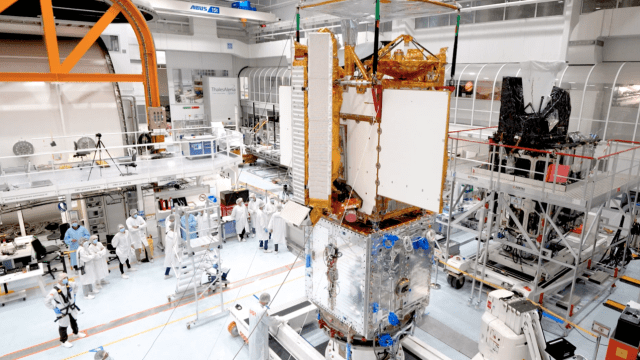A NASA satellite launched on Friday with an unprecedented task: providing the first comprehensive view of Earth’s ever-changing bodies of water.
SpaceX’s Falcon 9 rocket carried the Surface Water and Ocean Topography (SWOT) mission to orbit, lifting off from Space Launch Complex-4E at Vandenberg Space Force Base in California on December 16 at 10:46 p.m. AEDT. The mission was developed by NASA and the French space agency CNES, in partnership with the Canadian Space Agency (CSA) and the United Kingdom Space Agency.
The Surface Water and Ocean Topography (SWOT) satellite has separated from its @SpaceX Falcon 9 rocket. SWOT begins #TrackingWorldWater now and will cover the Earth’s surface worldwide at least twice every 21 days for at least three years. pic.twitter.com/OJfAifkl8R
— NASA (@NASA) December 16, 2022
“Water is fast becoming a major geopolitical resource: with climate change causing droughts and floods and global interest in water temperature and flows,” U.K. Science Minister George Freeman said in an emailed statement.
SWOT is the first global survey of Earth’s surface water, measuring how oceans, lakes, reservoirs, rivers, and wetlands across the world change over time. The data will help scientists better understand the effects of climate change, and better predict global flood risks, according to NASA.
SWOT is equipped with a radar instrument named Ka-band Radar Interferometer, or KaRIn for short, which is designed to survey at least 90% of the Earth’s surface and measure water height. KaRIn will use two antennas on either side of the satellite to bounce radar pulses off the water’s surface and then receive the return signal.
The satellite will operate in a non-Sun synchronous orbit, which means it will pass over the same area of Earth at the same mean solar time. Its orbit will be at an altitude just over 554 miles (891 kilometers), from where it will survey Earth’s surface water at least twice every 21 days. SWOT will send back about one terabyte of unprocessed data everyday, according to NASA.
The mission is designed to operate for at least three years. During that time, the satellite will offer a plethora of data on millions of bodies of water that will hopefully help us better understand our changing planet.
“SWOT will provide vital information, given the urgent challenges posed by climate change and sea level rise,” Laurie Leshin, NASA’s Jet Propulsion Laboratory director, said in the NASA statement. “That SWOT will fill gaps in our knowledge and inform future action is the direct result of commitment, innovation, and collaboration going back many years.”
“We’re excited to get SWOT science underway,” she added.
More: Shocking Photos Show Lake Mead’s Historically Low Water Levels
